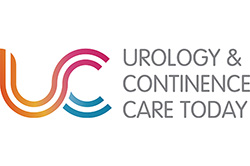References
Bhanot R, Jones P, Somani B (2021) Minimally invasive surgery for the treatment of ureteric stones - state-of-the-art review. Res Rep Urol. 13:227-236. https://doi.org/10.2147/RRU.S311010
Glaser AP, Smith AR, Maglaque D et al (2024) Enhanced clinical decisions for management of benign prostatic hyperplasia using patient-reported outcomes: protocol for a prospective observational study. BMC Urol 24:110. https://doi.org/10.1186/s12894-024-01500-0
Kronenberg P, Hameed BZ, Somani B (2021) Outcomes of thulium fibre laser for treatment of urinary tract stones: results of a systematic review. Curr Opin Urol 31(2):80-86. https://doi.org/10.1097/MOU.0000000000000853
Mitchell S, Havranek E, Patel A (2008) First digital flexible ureterorenoscope: initial experience. J Endourol 22(1):47-50. https://doi.org/10.1089/end.2007.0046
Rivero-Moreno Y, Echevarria S, Vidal-Valderrama C et al (2023) Robotic surgery: a comprehensive review of the literature and current trends. Cureus 15(7):e42370. https://doi.org/10.7759/cureus.42370
Seckam A, (2023) Does digital health revolutionise medical practice? J Commun Nurs 37(4):22-23
Sircus W (2003) Milestones in the evolution of endoscopy: a short history. J R Coll Physicians Edinb 33(2):124-34
Turkbey B, Rosenkrantz AB, Haider MA (2019) Prostate imaging reporting and data system version 2.1: 2019 update of prostate imaging reporting and data system version 2. Eur Urol 76(3):340–351. https://doi.org/10.1016/j.eururo.2019.02.033
Wake N, Rosenkrantz AB, Huang R et al (2019) Patient-specific 3D printed and augmented reality kidney and prostate cancer models: impact on patient education. 3D Print Med 5(1):4. https://doi.org/10.1186/s41205-019-0041-3
Glaser AP, Smith AR, Maglaque D et al (2024) Enhanced clinical decisions for management of benign prostatic hyperplasia using patient-reported outcomes: protocol for a prospective observational study. BMC Urol 24:110. https://doi.org/10.1186/s12894-024-01500-0
Kronenberg P, Hameed BZ, Somani B (2021) Outcomes of thulium fibre laser for treatment of urinary tract stones: results of a systematic review. Curr Opin Urol 31(2):80-86. https://doi.org/10.1097/MOU.0000000000000853
Mitchell S, Havranek E, Patel A (2008) First digital flexible ureterorenoscope: initial experience. J Endourol 22(1):47-50. https://doi.org/10.1089/end.2007.0046
Rivero-Moreno Y, Echevarria S, Vidal-Valderrama C et al (2023) Robotic surgery: a comprehensive review of the literature and current trends. Cureus 15(7):e42370. https://doi.org/10.7759/cureus.42370
Seckam A, (2023) Does digital health revolutionise medical practice? J Commun Nurs 37(4):22-23
Sircus W (2003) Milestones in the evolution of endoscopy: a short history. J R Coll Physicians Edinb 33(2):124-34
Turkbey B, Rosenkrantz AB, Haider MA (2019) Prostate imaging reporting and data system version 2.1: 2019 update of prostate imaging reporting and data system version 2. Eur Urol 76(3):340–351. https://doi.org/10.1016/j.eururo.2019.02.033
Wake N, Rosenkrantz AB, Huang R et al (2019) Patient-specific 3D printed and augmented reality kidney and prostate cancer models: impact on patient education. 3D Print Med 5(1):4. https://doi.org/10.1186/s41205-019-0041-3


